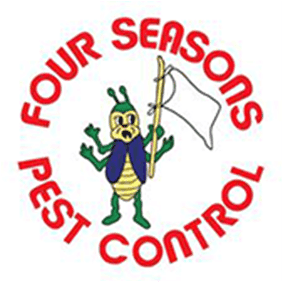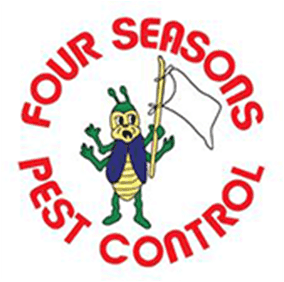Termites cause upwards of $5 billion dollars of property damage each year. Most of this damage is not covered by homeowner’s insurance policies. Termites are silent and generally eat wood non-stop. There are approximately 2,000 different kinds of termite species in the world, but only two predominantly infest homes in Danville, VA, Moneta, VA, and Reidsville, NC.
Four Seasons Pest Control offers several solutions for effectively treating properties against termites. All solutions require periodic inspection to ensure active barriers against termites remain effective. The two termite species in the Four Seasons service area follow:
Formosan Termite
Appearance: With a creamy white to brown color, Formosan termites are approximately ½ inch in length with a long, narrow and oval shape. They have six legs and antennae. Formosan termites are sometimes confused with flying ants as both insects have wings.
Habitat
Originally from Asia, the Formosan termite is found throughout the American south, including North Carolina and Virginia. They prefer mildly temperate climates and arrived in the U.S. sometime around 1956. These termites can build huge colonies of 350,000 workers that will build mud tubes from the ground to the wood in a target structure.
Diet
Formosan termite generally target the softwood fibers in wood. They need water, which the find in the ground, and the wood they find in your home to feed. Formosan termite build elaborate mud tubes from the ground, up the side of foundations and supporting structures, to the wood frame of your home.
Control
Formosan termites are considered one of the most aggressive termites in North America. They are relentless in their destruction of wood and cellulose fiber. They are considered one of the hardest termites to stop and earned the moniker “Super Termites.” They are very hardy and difficult to eliminate. Fortunately, qualified pest control technicians have access to equally powerful treatment options. It is strongly recommended that homeowners hire a professional.
Subterranean Termite
Appearance: While all termites have long narrow bodies, they vary greatly in appearance depending on the termite's role in the colony. Subterranean termite workers are pale cream-colored and 1/8-inch long; soldiers have elongated heads with pincer-like mandibles; and primary reproductives (commonly called "swarmers" and the termites most often seen in the open) are dark brown or black and 1 inch long, with large whitish wings.
Habitat
Subterranean termites live underground and build protective mud tunnels above ground to search for food. They will die if exposed to open air for prolonged periods. Attracted to moisture (downspouts, leaky hoses, etc.), they will enter a building anywhere there is direct soil to structure contact. Colonies contain up to 2 million members, organized into castes depending on tasks- workers, soldiers and reproductives. Subterranean termites swarm in the spring, when groups of reproductive termites go off to start new colonies.
Subterranean termites are found in every U.S. state except Alaska. They are very common and widespread across the country. Because of this, they cause the most damage of any termite species. They are native to North America.
Diet
The Subterranean termite requires both water and wood to feed. Denial of either of these sources will cause a colony to collapse. Moist basements and crawl spaces are perfect areas for subterranean termites to get water. Like other termite species, they feed on products containing cellulose.
Control
Subterranean termites are by far the most destructive species. They can collapse a building entirely, causing financial ruin for the owner. To help prevent termite infestations, eliminate wood contact with soil. Make sure at least four inches of foundation can be seen all around the home. Avoid water accumulation near your home's foundation. Divert water away with properly functioning gutters, downspouts and splash blocks. Fix all roof and plumbing leaks as soon as possible.
Options for controlling existing infestations include placing liquid pesticides in the soil around your home, or above-ground bait stations.


